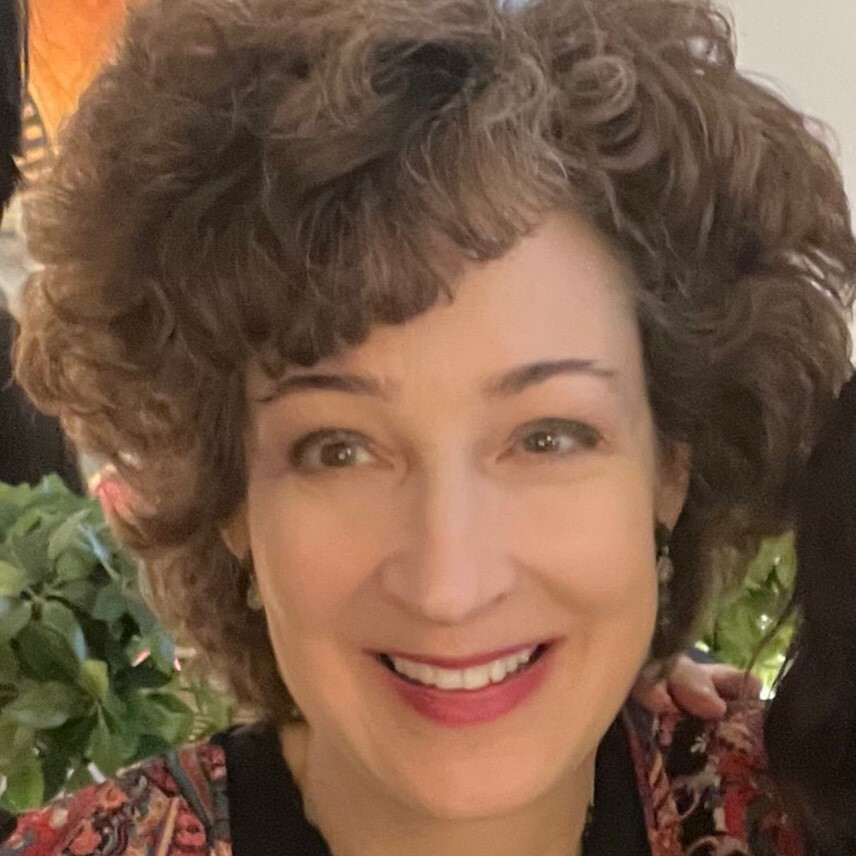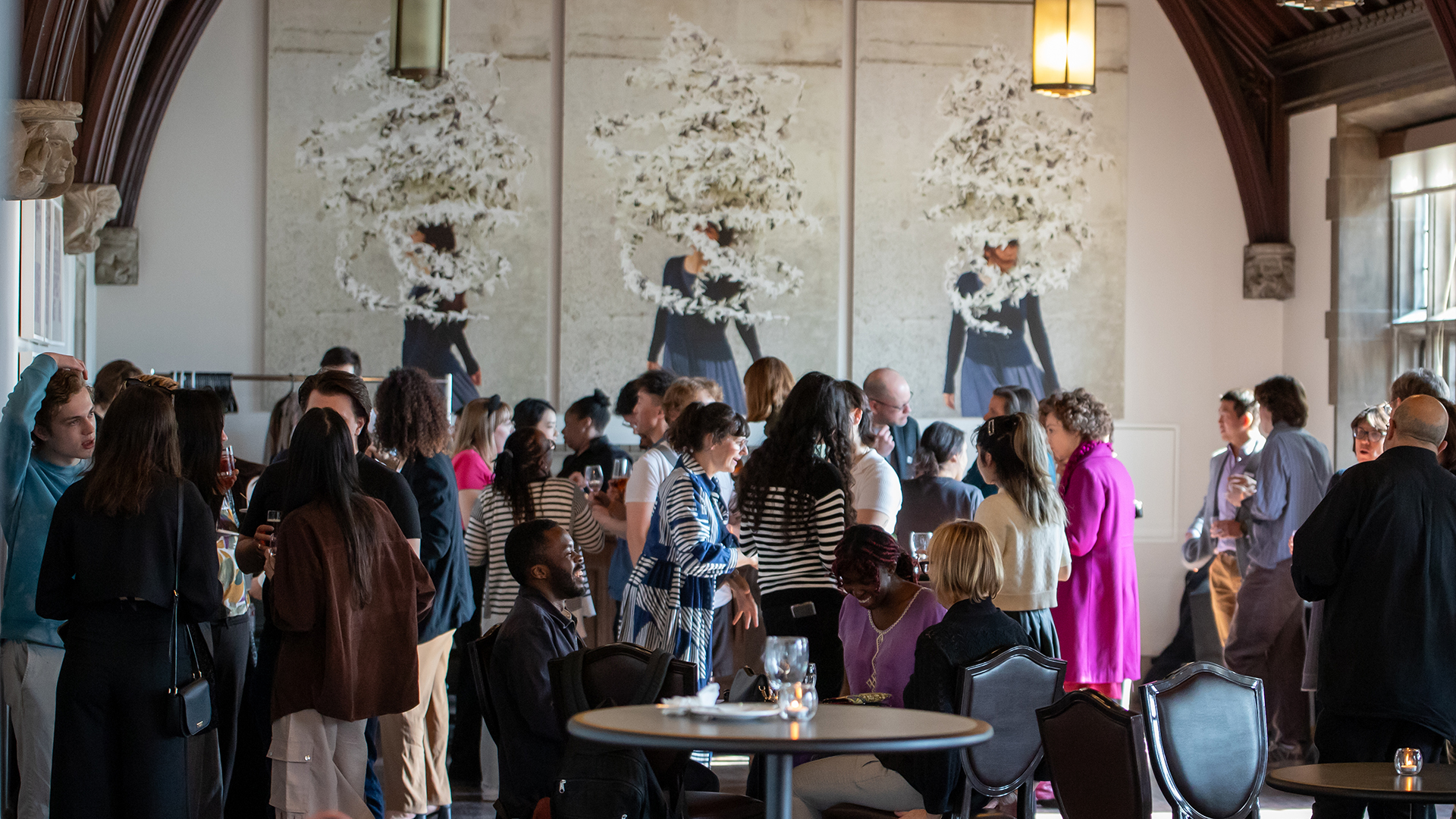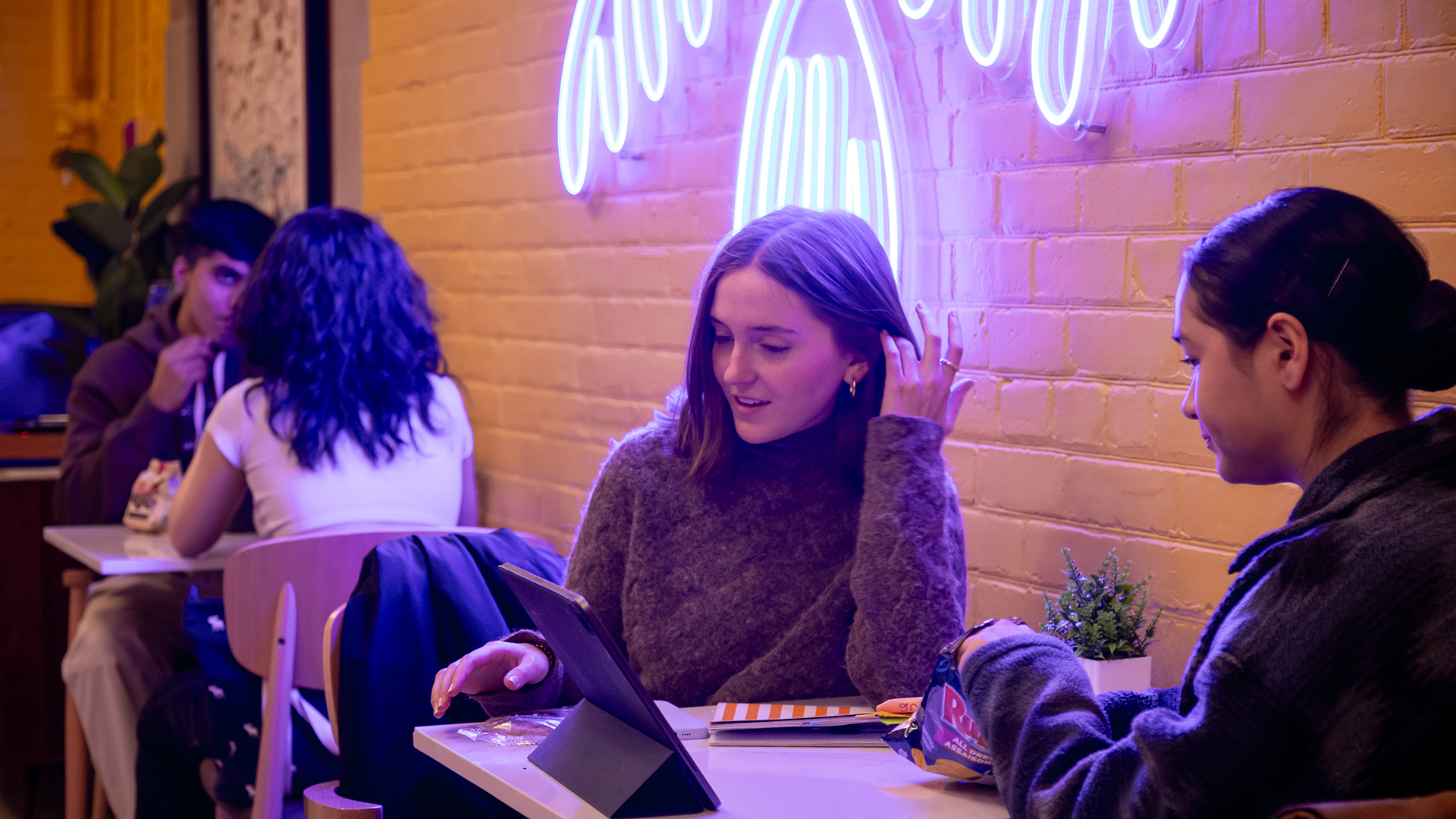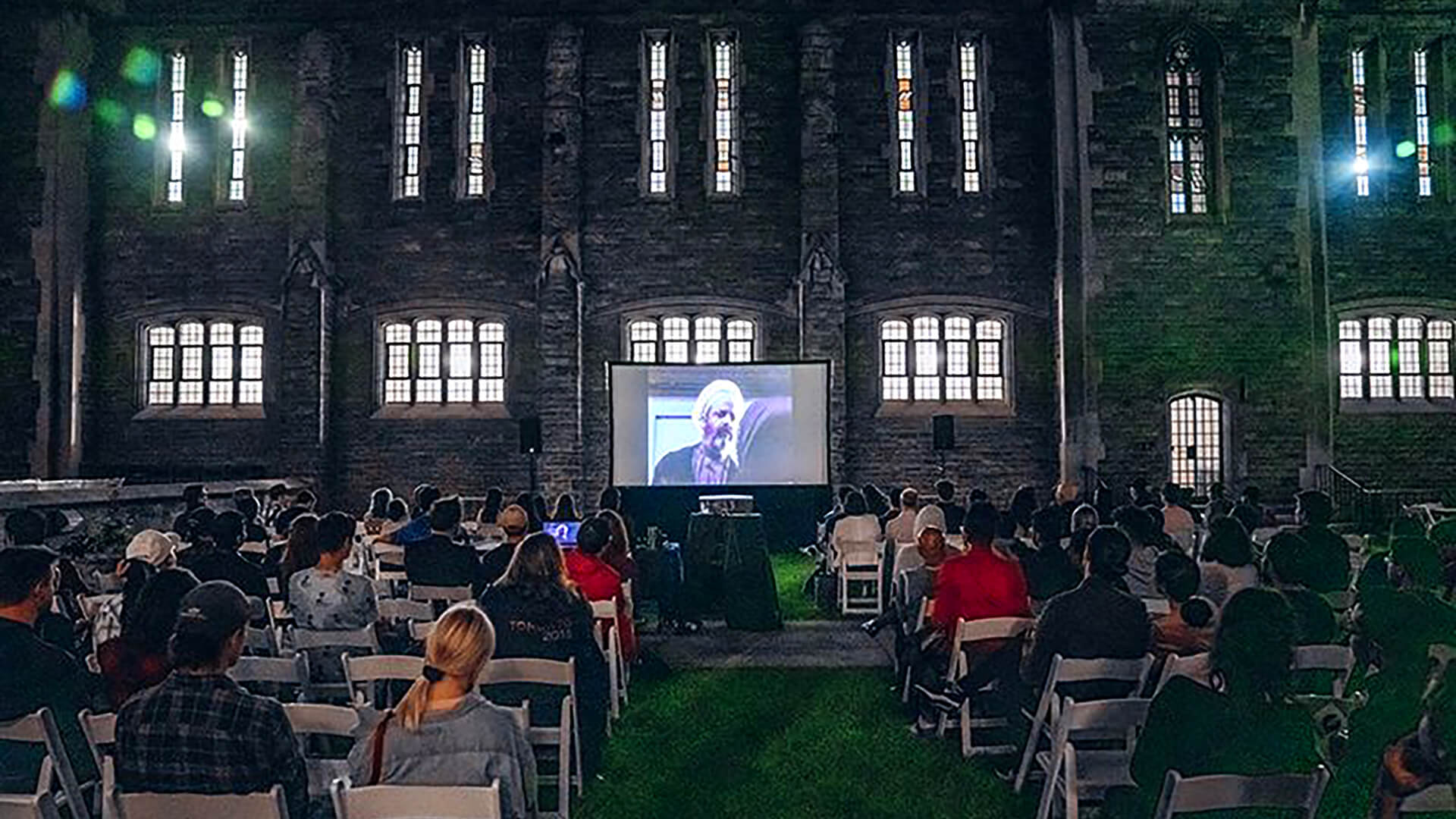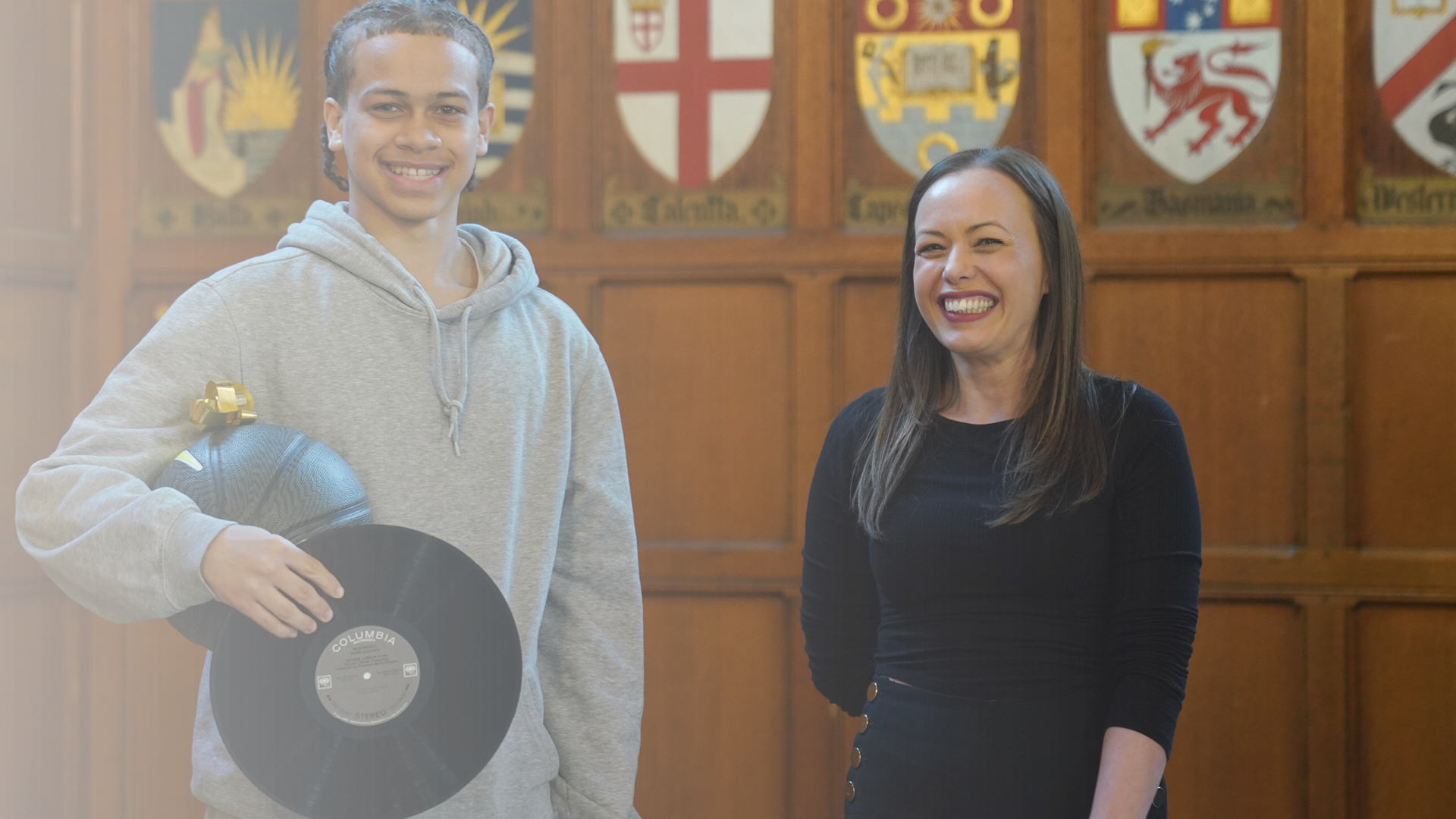
Danielle Dinunzio, manager of Community Access & Outreach, has enriched the program since she took the reins three years ago. The U of T alumna who has worked at Hart House for six years discusses highlights, her upcoming textbook publication and what she loves the most about working at the House.
Hart House offers a space for lifelong learning that invites and enables all students, faculty, staff, alumni and members of the broader community to better understand themselves, one another and the world we share. Building and sustaining community is essential to the House’s enduring vitality.

Now three years into her role as Manager of Community Access & Outreach at Hart House, Danielle Dinunzio lives these aspirations every day. She has introduced many enrichments, crediting the House’s openness to new ideas in community building. In this Q&A, she sits down to chat about her role and the many highlights.
What is your role at Hart House?
My role at Hart House is two pronged. There’s the student peer outreach work on campus. We have a team of student ambassadors who go out and do programming, mostly around community building, helping students feel more connected by doing things outside the classroom. It brings them together and allows them to be themselves.
The other side of my job is the access work, centred around high school students. There’s also some access work connected to community partners with the idea of bringing them to U of T and Hart House, getting them to feel more comfortable on campus.
Most of my days are spent in programming. We have various programs, like our Youth Advisory Council. We do programming with the Native Youth Resource Centre and The 519, groups that come in for activities within our space. So, it's planning the sessions, organizing guest instructors, etc.
My job is different every day, which is probably a good thing.
How have you grown the portfolio at Hart House in the last three years?
When I first started, there were initiatives already taking place and they were assigned to different staff. As programming grew, it made sense to think about these initiatives collectively, to bring them together. That helped us look at the bigger picture for all the programs, think about things where a workshop facilitator might do things with multiple groups instead of just one group as one offs. And from there, it grew to thinking about the impact of the programming we’re doing. That’s how the Youth Advisory Council started: bringing the youth into Hart House to be our guide for the programming.

As well, the Brotherhood of Ethnic Excellence, BEE, has also came up during my time. We looked around to the programs that were coming and noticed a significant gap in the youth participants – specifically, Black male youth were not attending. So that program was born out of the gap.
What are some highlights?
Maamawi: Tattoo Gathering 2023, last October, in partnership with First Nations House Indigenous Student Services. It was a risky endeavour for us to take on initially – you know, doing tattoos at the University of Toronto. It isn’t a normal thing you see every day. It was a big undertaking to move forward with new staff at an organization that we have a partnership with. The success of that day was remarkable. Over 100 people received tattoos. People didn’t want to leave at the end of the day!

One student said it was the first time in her four years at U of T that she felt there was something for her. That event made a big difference to her. That, to me, is a giant success.
Our staff is also a big highlight – our full-time staff and also our student staff. I like seeing them grow through their positions, learn and then come back. A lot of our student staff graduate and then come back and do things with us post graduation. They often volunteer to run a workshop, for example. That speaks to the community that has been built. I’m pretty proud of that.
Most of the work we do is relationship building, building that sense of community within the House. I think that’s really the strategy. We are one big community together working on things.
You have an upcoming chapter in a book?
The article, “Trust doesn’t happen on a timeline: Partnership work in PAR [participatory action research],” is a chapter in an upcoming textbook, Participatory Research in Sport and Physical Activity, published by Routledge. I co-wrote it with others: U of T Alumna Sabrina Brathwaite, Madison Danford, Simon C. Darnell (Associate Professor in the Faculty of Kinesiology and Physical Education, U of T), Maria Joaquina Lima Larrazabal, Robyn Smith and OISE student Chantelle Soropia.
The case study is based on a collaborative project research podcast program with grad students. It’s focused on the ideas around a Hart House podcast about the challenges between universities and community.
To elaborate, we explored the key characteristics of effective and equitable partnerships in participatory research, strategies to support the process of building and sustaining partnerships with diverse stakeholders, and the challenges and opportunities that may arise throughout the process of partnership working.
If all goes to plan, the book should be available in time for fall courses in 2024.
This is one great example of how programming in this area, and at Hart House more broadly, is directly connected to work in the classroom and academic research as part of experiential learning at the University.
What do you love most about Hart House?
I like that there is room for new ideas to expand and grow. Returning to the Youth Council and BEE, there was room for us to present these gaps, and how we think we could do this programming better. There’s openness from the Hart House collective. There’s professional freedom to do new things, see how they go, then pivot and make adjustments.
Talking Walls, an on-going series of informal exhibit spaces staged throughout Hart House, is a good example: Being able to shift to the needs of the community.
Any messages to students and members of the larger community?
We have a lot upcoming! Winter and summer are probably the busiest out of our year. We just launched the applications for the audiovisual tech mentorship program, which happened over the March break. There's also an outdoor leadership program that will happen in May. We will also open applications for our group fitness mentorship program in the summer. Those are three big youth programs that are upcoming.
We’ll also have our end-of-year celebration in May, where our community members get to come together to celebrate their achievements.

Learn more about Youth Access programming.
